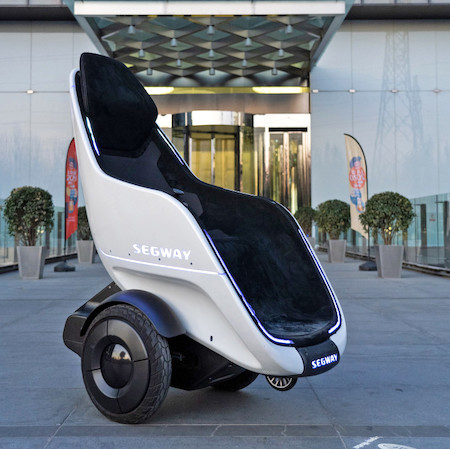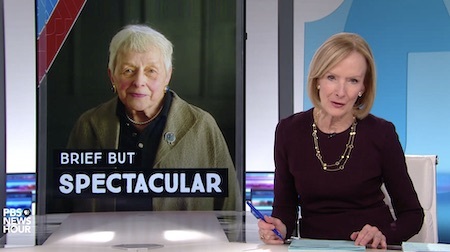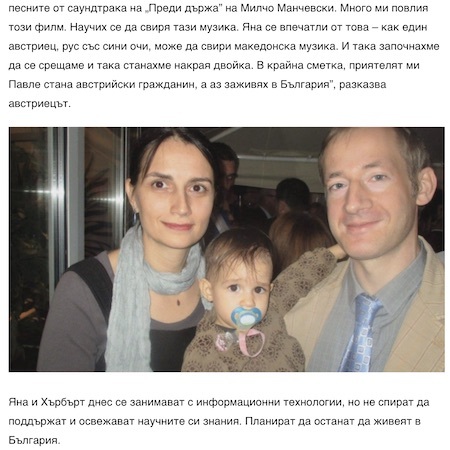Marc Abrahams's Blog, page 129
January 4, 2020
Two innovative ways to fill a theater
In most theaters, people wander to their seat locations, a sometimes awkward way to fill the room. Technology, some brand new, some old, can change that.
Segway-Ninebot has just announced a device—a self-balancing, two-wheeled chair—intended as a vehicle to transport people through the streets. This new chair could also be used (we here, now propose) to take already-seated patrons to their proper spots in the theater, and indeed to take them to the theater. Sit down at home, and be whisked out into the streets, then whisked through those streets, then whisked into the theatre, and then rolled to row F, seat-spot number 12. Or wherever. Without ever having to stand up. This is a photo of the Segway machine:
The company describes the device:
The Segway S-Pod is a first-class smart transporting pod for enclosed campuses such as airports, theme parks and malls. It is a safe, self-balancing vehicle that is operated by an intuitive assistive navigation panel. With an adaptive center-of-gravity automatic control system, passengers can easily adjust the speed – up to 24 mph – by handling the knob to change the center of gravity in the pod. The S-Pod spins and rotates by the center smoothly for directional changes. The rider does not need to physically lean forward and back to accelerate or slow down. Also, since the “brake” is placed by the shift of the center of gravity, it eliminates the possibility of the S-Pod tipping over in any situation. The seating of the S-Pod offers wide angle views.
If one needs to be whisked to the restroom and back, there would still be no need to stand and awkwardly walk there and back.
Some logistics might still have to be worked through, but you get the idea.
There are alternatives. Older, yet even more innovative, alternatives.
An Overlooked Way to Get Seated Theatre Patrons to their Proper Spots
As we wrote several years ago, an invention patented in 1924 by Louis J. Duprey of Boston, Massachusetts, would let theatre patrons leisurely sit down, in a basement chamber, and then be hydraulically lifted up—by their seats, into their proper place in the theater proper. The invention was, so far as we have been able to learn, never used in a public theater. Or anywhere else.
This pair of drawings, from Duprey’s patent, is almost self-explanatory about how the system operates:
Duprey’s invention, unlike the new Segway device, has the advantage of allowing late-coming theater patrons to arrive at their proper places without awkwardly passing in front of other, already-placed patrons.
With both the old, Duprey, and the new, Segway, methods, there are perhaps some safety questions still to be answered.

January 3, 2020
Science/Music Pairing: Dark Eyes
Here’s another in our series that combines published research papers with musical performances that suitably accompany them.
“Dark eyes in female sand gobies indicate readiness to spawn,” Karin H. Olsson, Sandra Johansson, Eva-Lotta Blom, Kai Lindström, Ola Svensson, , and , PloS ONE , vol.12, no. 6 (2017): e0177714.
“Dark Eyes,” performed by Burning Caravan:

January 2, 2020
Professor Jean Berko Gleason has some things to say
You may have heard heard Professor Jean Berko Gleason say “Welcome, welcome” and “Goodbye, goodbye” in the Ig Nobel Prize ceremonies. Oh, she has ever so much more to say. Tonight on the PBS News Hour, she said some of it.
And you can hear Professor Berko Gleason talk about seemingly everything in the world, including, her famous disgust for people eating soft-boiled eggs, in episodes of the Improbable Research blog.

January 1, 2020
The theme of the next Ig Nobel ceremony…
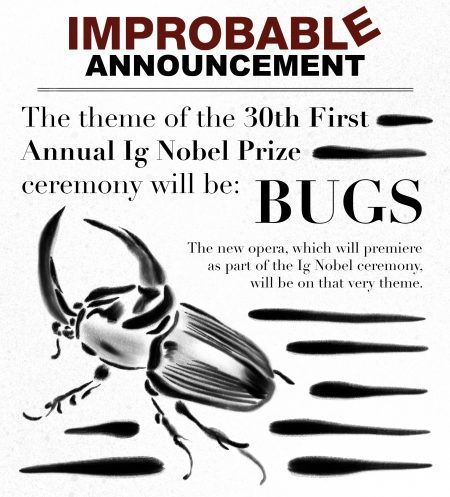
The theme of the 30th First Annual Ig Nobel Prize ceremony will be: BUGS
The opera, which will premiere as part of the Ig Nobel ceremony, will be on that very theme: BUGS.
The ceremony will happen on Thursday evening, September 17, 2020, at Sanders Theatre, Harvard University. TICKETS go on sale in July.
The ceremony will be webcast, as it has been every year beginning in 1995.

A look back at 2 looks back, 10 years ago, at the coming 2000
 Inchoate nostalgia could drive you to join us in taking a look back to ten years ago when we looked back ten years at:
Inchoate nostalgia could drive you to join us in taking a look back to ten years ago when we looked back ten years at:
The prediction of the location of the first sunrise of the new millennium ; and at
Project AIRhead 2000. Announced in June 1994 (click here to see the announcement), the project celebrated every item, project or concept that had the number 2000 tacked onto its name in giddy anticipation of the coming millennium.

December 30, 2019
The dead are rising up against their national leaders
Led by Ig Nobel Prize winner Lal Bihari, the dead are rising up against their national leaders. Here’s a look back at notable happenings in 2019. The Times of India reported, on January 19, 2019:
In Varanasi, ‘living dead’ to contest against PM Modi
If Prime Minister Narendra Modi decides to contest the upcoming Lok Sabha elections again from his parliamentary constituency Varanasi, apart from the opposition he will also have to face challenge from a ‘living dead’. And PM Modi is not alone, a similar test awaits Congress president Rahul Gandhi, SP chief Akhilesh Yadav and BSP supremo Mayawati.
Mritak Sangh, an association of living people declared dead in revenue records either fraudulently or by mistake, has decided to field candidates against Modi and other top political leaders like Rahul, Akhilesh and Mayawati.
“We will field our members against these leaders to highlight the plight of the ‘living dead’ people,” Mritak Sangh president Lal Bihari ‘Mritak’ told reporters at the Rajghat cremation ground in Azamgarh on Friday….
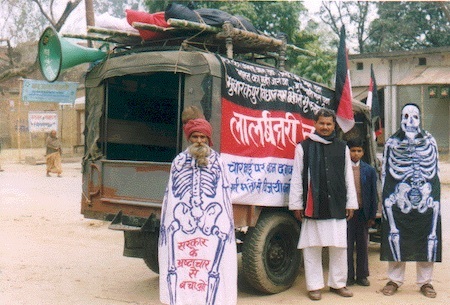
Background: Lal Bihari’s Ig Nobel Prize
The 2003 Ig Nobel Peace Prize was awarded to Lal Bihari, of Uttar Pradesh, India, for a triple accomplishment: First, for leading an active life even though he has been declared legally dead; Second, for waging a lively posthumous campaign against bureaucratic inertia and greedy relatives; and Third, for creating the Association of Dead People.
Lal Bihari overcame the handicap of being dead, and managed to obtain a passport from the Indian government so that he could travel to Harvard to accept his Prize. However, the U.S. government refused to allow him into the country. His friend Madhu Kapoor therefore came to the Ig Nobel Ceremony and accepted the Prize on behalf of Lal Bihari. Several weeks later, the Prize was presented to Lal Bihari himself in a special ceremony in India.

“Whirligig of Time” Tested on the Streets of Cambridge
The pile of props and artifacts from past Ig Nobel Prize Ceremonies has grown into a remarkable collection (several people have remarked on it). Some items sit on a shelf, but others must be worn and used, if they are to be meaningful. For instance, audiences who tuned in early to the 2016 ceremony, saw our Majordomo sitting quietly on stage, reading a book, and wearing a special “Whirlygig of Time” hat.
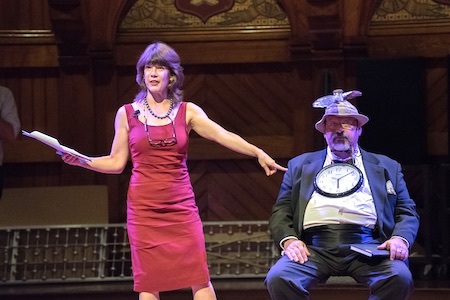
The whirligig of time, on display moments prior to the 2016 Ig Nobel Prize ceremony. Photo: Alexey Eliseev / Improbable Research.
As “Ignitaries” came on stage, they paused to spin the propeller. When all had taken their turn it was time for the ceremony itself to begin, so the Ig Safety Announcer (who happens to be the Boston globe’s “Miss Conduct”) entered and recited these Shakespeare-Whirlygig lines before spinning the propeller that was mounted atop the Majordomo:
‘Tis almost the appointed hour! Why then methinks ’tis time to smile again. Does the clock upbraid us with the waste of time? No, it is the whirligig of time. The whirligig of time! (from Twelfth Night)
What to do with the hat after the ceremony? Ceremony co-producer David Kessler decided to test whether it would function outside of a theater. He chose to test it on the streets of Cambridge, Massachusetts, on the way to a meeting the day after the ceremony. Here is his report:
On the 20 minute walk to our meeting the whirligig was clunky, didn’t sit securely on my head. It shifted too much and was very clunky. On the walk back I found a much better position for the chin straps, making it more stable and easier to wear. This meant I could stand straighter and walk more easily. That was when things started to happen.
Various people started making eye contact, while others avoided eye contact just as strenuously. A guy in a truck pumped his fist and said, “Vote Trump!” (When I replied, “Yeah, right” he laughed out loud and, with a big smile on his face, said, “Ha! Liberals!”). A group of school kids, maybe 5 years old, came around the corner, being led on a rope. They each wanted to spin the propeller (and I obliged).
…Then I saw the statue of Saint Peter and instantly knew I had to take a photo with it. The results are below. I call them “1 Whirlygig” and “2 Whirlygigs” respectively.
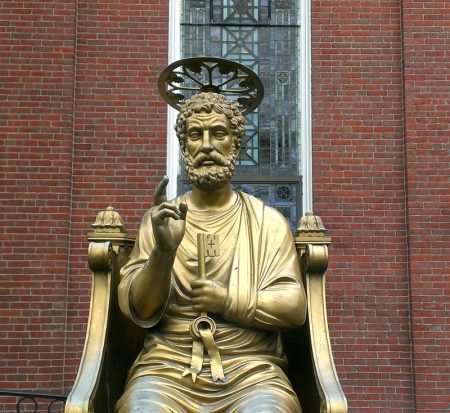
“One whirligig”
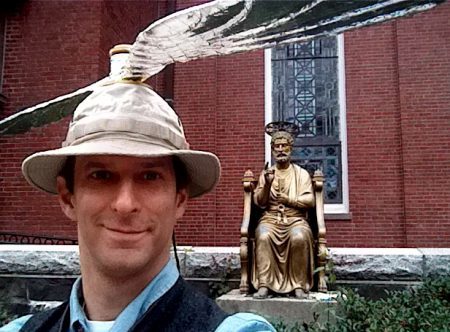
“Two whirligigs”

Wild Goose Chase – the math(s)
 If you’re earnestly chasing something that can’t tun as fast as you do, a cursory mathematical analysis of the situation can give a reassuring result – you’ll probably catch up with it. (Despite what the Ancient Greek philosopher Zeno might have said about it). But what if the entity being chased knows that it’s being chased – and takes unorthodox avoidance measures. Such as running straight towards you, or deliberately trying to lead you towards a trap of some kind? The math(s) becomes considerably more complex.
If you’re earnestly chasing something that can’t tun as fast as you do, a cursory mathematical analysis of the situation can give a reassuring result – you’ll probably catch up with it. (Despite what the Ancient Greek philosopher Zeno might have said about it). But what if the entity being chased knows that it’s being chased – and takes unorthodox avoidance measures. Such as running straight towards you, or deliberately trying to lead you towards a trap of some kind? The math(s) becomes considerably more complex.
Professor Andrew Gard of the mathematics and computer science department at Lake Forest College, Illinois, US, has extensively explored such situations.
“The classical pursuit problem considers the path traced by a point in space as it charges directly toward a moving target. But what if the target has more lofty goals than mere escape? To what degree can it control the path taken by its pursuer? We prove that the pursuer can be led to any point in without being allowed to close more than an arbitrarily small distance en route.”
See : The Wild Goose Chase Problem in The American Mathematical Monthly 125(7):602-611 · August 2018
[Research research by Martin Gardiner]

December 28, 2019
“How Did Bulgaria Get to the Ig Nobel Prize Ceremony?”
The Bulgarian bTV network asks and answers the question “How Did Bulgaria Get to the Ig Nobel Prize Ceremony?” Their November 28, 2019 report profiles Ig Nobel Prize winner Herbert Crepaz.
The report begins with the statement “The winner of the Ig Nobel Prize in Biology is an Austrian who lives in our country.”
Magnetic Cockroaches, Dead Versus Alive
The 2019 Ig Nobel Prize for biology was awarded to Ling-Jun Kong, Herbert Crepaz, Agnieszka Górecka, Aleksandra Urbanek, Rainer Dumke, and Tomasz Paterek, for discovering that dead magnetized cockroaches behave differently than living magnetized cockroaches.
Their prize-winning research is documented in the study “In-Vivo Biomagnetic Characterisation of the American Cockroach,” Ling-Jun Kong, Herbert Crepaz, Agnieszka Górecka, Aleksandra Urbanek, Rainer Dumke, Tomasz Paterek, Scientific Reports, vol. 8, no. 1, 2018: 5140.
Magnetic Cockroaches on the Ig Nobel EuroTour 2020
You can see—and talk with—Herbert Crepaz when he, along with many other Ig Nobel Prize winners, takes part in the next Ig Nobel EuroTour, in March and April 2020.
BONUS (from Slovakia): “The Parodic Ig Nobel Prizes Did Not Disappoint Again This Year“

December 27, 2019
Effect of Wrapping Neatness on Gift Attitudes [research study]
What exactly is the effect of wrapping neatness on gift attitudes? A new study gives everyone the chance to ponder anew this vexatious question. The study is:
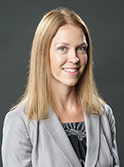 “Presentation Matters: The Effect of Wrapping Neatness on Gift Attitudes,” Jessica M. Rixom [pictured here], Erick M. Mas, and Brett A. Rixom, Journal of Consumer Psychology, epub 2019. The authors, at the University of Nevada, and at Vanderbilt University, explain:
“Presentation Matters: The Effect of Wrapping Neatness on Gift Attitudes,” Jessica M. Rixom [pictured here], Erick M. Mas, and Brett A. Rixom, Journal of Consumer Psychology, epub 2019. The authors, at the University of Nevada, and at Vanderbilt University, explain:
We propose that when recipients open a gift from a friend, they like it less when the giver has wrapped it neatly as opposed to sloppily and we draw on expectation disconfirmation theory to explain the effect…. However, when the gift‐giver is an acquaintance, there is ambiguity in the relationship status and wrapping neatness serves as a cue about the relationship rather than the gift itself….
We assess these effects across three studies and find that they hold for desirable, neutral, and undesirable gifts, as well as with both hypothetical and real gifts.
(Thanks to Scott Langill for bringing this to our attention.)

Marc Abrahams's Blog
- Marc Abrahams's profile
- 14 followers


